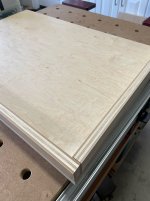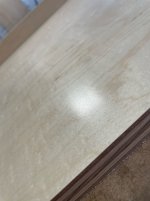yangwoodworking
Member
- Joined
- Oct 3, 2019
- Messages
- 36
I am fairly new to woodworking. I have some veneer covered plywood that was leftover from other project. Now, I want to use them to make a tray. I have a very basic question: how do I join the wood on the veneer? Please see the photo. The vertical piece needs to join the bottom piece. I do not think wood glue works on the veneer.
I guess I have to use router to remove some veneer from bottom piece? Or maybe I can use epoxy to join? Any thoughts?
I guess I have to use router to remove some veneer from bottom piece? Or maybe I can use epoxy to join? Any thoughts?


